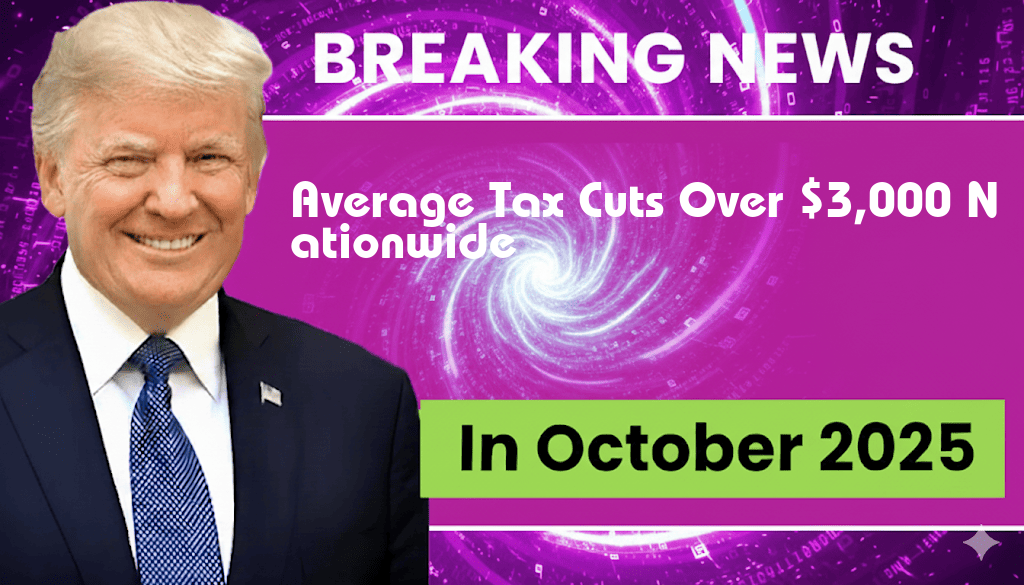In a significant move aimed at easing the financial burden on American families, new legislation has been enacted that is projected to deliver average tax cuts exceeding $3,000 across all 50 states. This sweeping tax reform comes at a time when the economy is grappling with inflation and rising living costs. By reducing tax liabilities, policymakers hope to stimulate consumer spending and bolster economic growth. The legislation, which has gained bipartisan support, is expected to benefit millions of households, offering much-needed relief as the nation navigates ongoing economic challenges. The tax cuts will take effect in the upcoming fiscal year, providing families with increased disposable income to allocate towards essential expenses, savings, and investments.
Details of the Tax Cuts
The new tax legislation has introduced various provisions aimed at lowering the tax burden for individuals and families. Key components include:
- Increased Standard Deductions: The standard deduction has been raised significantly, allowing more taxpayers to benefit without itemizing their deductions.
- Child Tax Credit Enhancement: Families with children will see an expansion of the child tax credit, providing additional financial support for child-related expenses.
- Lowered Income Tax Rates: The tax brackets have been adjusted, resulting in lower rates for a broad segment of earners across the income spectrum.
State-by-State Breakdown
| State | Average Tax Cut |
|---|---|
| California | $3,500 |
| Texas | $3,200 |
| New York | $3,800 |
| Florida | $3,100 |
| Illinois | $3,300 |
| Pennsylvania | $3,000 |
| Ohio | $3,250 |
| Georgia | $3,150 |
Impact on Families and the Economy
The implications of this legislation extend beyond mere tax savings. Economists predict that the additional funds in consumers’ pockets will lead to increased spending, which could stimulate local economies. Families are expected to utilize these tax cuts for various purposes, including:
- Paying off debts
- Investing in education and healthcare
- Saving for retirement
- Purchasing goods and services, which can drive job creation
Reactions from Lawmakers and Experts
Lawmakers from both sides of the aisle have expressed their support for the new tax cuts, emphasizing the need for economic relief during challenging times. Senator Jane Doe commented, “This legislation is a vital step in ensuring that American families can keep more of what they earn. Our goal is to foster an environment where families can thrive and invest in their futures.”
Economists also weigh in on the potential benefits of the tax cuts. Dr. John Smith, an economic policy expert, stated, “By putting more money back into the hands of consumers, we are not only providing immediate relief but also laying the groundwork for long-term economic growth. This is a crucial moment for American households.”
Next Steps for Implementation
The tax cuts are set to take effect next fiscal year, with the IRS expected to release updated guidelines and information on how taxpayers can maximize their benefits. Tax preparation services are gearing up to help clients navigate the new changes, ensuring that individuals take full advantage of the available cuts.
As families await the implementation of these tax cuts, many are hopeful that this legislation will provide the financial relief needed to weather ongoing economic challenges. For more information on the new tax legislation, visit the official IRS website or consult reputable financial news sources such as Forbes and The Washington Post.
Frequently Asked Questions
What is the average tax cut amount under the new legislation?
The average tax cut amount under the new legislation exceeds $3,000 across all 50 states, providing significant relief to taxpayers.
How does this tax cut impact different states?
The tax cuts vary by state, but overall, residents in all states can expect an average reduction of over $3,000, benefiting low, middle, and high-income earners alike.
When will these tax cuts take effect?
The new tax cuts are set to take effect starting from the next tax year, allowing taxpayers to see the benefits during their upcoming tax filings.
Who qualifies for the tax cuts?
All taxpayers across the 50 states are eligible for the average tax cuts, which aim to provide financial relief regardless of income level.
What is the purpose of these tax cuts?
The primary purpose of these tax cuts is to stimulate the economy by increasing disposable income for families, thereby encouraging spending and investment.



